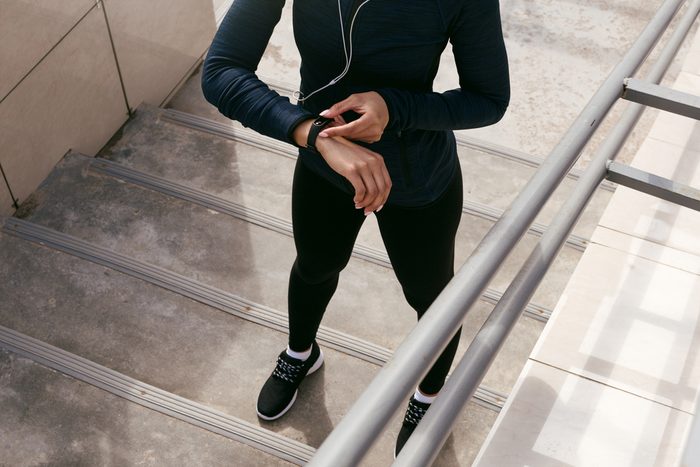
Safe ways to exercise during the Covid-19 pandemic
The Covid-19 pandemic has interrupted just about every aspect of daily life for most people, including the ability to get some exercise. Even if you tried to maintain some semblance of your normal fitness routine at home, chances are, it hasn’t been a perfect trade. While many gyms across the country are just beginning to reopen, the outdoors is filled with opportunities for physical activities (depending on where you live, of course). It feels like the right time to get moving again, but a big question still looms: How can you do that safely?
“The reality is that [Covid-19] is not going to pass anytime soon,” says Chidinma Chima-Melton, board-certified pulmonologist at UCLA Medical Center in Santa Monica. “This is something we’re going to have to learn how to live with and navigate our lives around.” This includes adapting sports and workouts to make sure they can be done safely. “We need to continue exercising while ensuring we remain vigilant to avoid this deadly virus,” says Dr. Chima-Melton.
It may feel like a hassle to change up what you are doing, but when it comes to physical activity, it’s definitely worth it. Not only for the physical health benefits, but also (and maybe even more importantly), for the mental health benefits. “Exercise is important right now especially because of all the anxiety and psychological disturbances people are experiencing associated with being housebound for months,” she says. Anxiety, social isolation, fear…for many people, mental health has been challenged in new ways lately. Exercise can often help manage that.
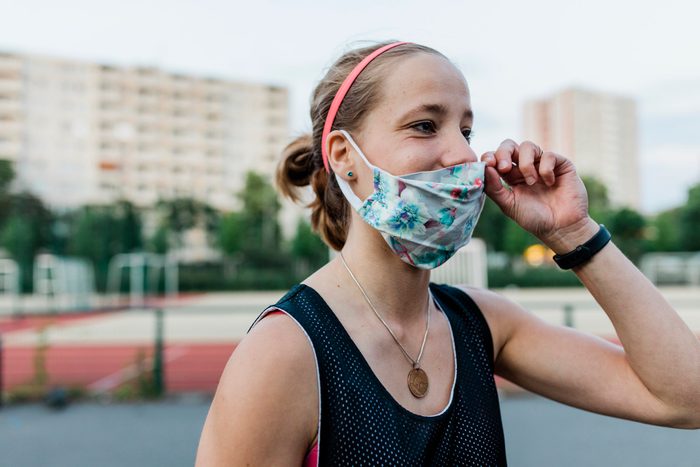
How to exercise safely and prevent Covid-19
According to the Centers for Disease Control and Prevention (CDC), there are a few general rules you should follow when exercising to avoid the spread of Covid-19:
-
Maintain at least six feet of separation with other people.
-
Wear a mask, especially when physical distancing is difficult.
-
Stick to outdoors exercise when possible, especially if you’re doing vigorous-intensity exercise and cannot wear a mask.
-
When indoors, social distance, wear masks, and open windows to increase air ventilation.
-
Clean and disinfect shared equipment.
Overall, the safest way to play sports and work out is outside and at a distance from other people. If you’re hoping to do these physical activities with friends, wearing a mask is the best way to stay safe. “When two people wear face coverings, the risk of transmission is very, very low, essentially nil,” says Dr. Chima-Melton.
Some sports and workouts lend themselves to social distancing more than others. These are some of the best physical activities you can do to get active and stay safe.
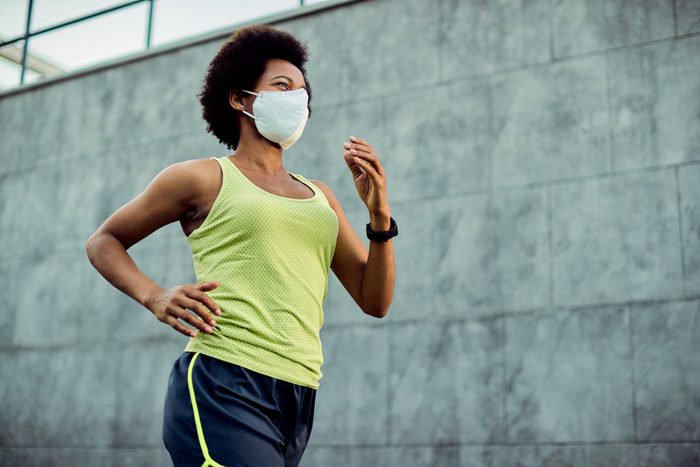
Physical activity #1: Go for a walk or run
Whether you prefer walking or running, just getting outside and moving your body will be great for you physically and mentally. If you live in a crowded town or city, though, you’ll need to take some extra precautions.
“You need to be pretty aware of your surroundings, because while these activities can be done pretty safely with regard to social distancing, you may encounter other folks depending on where you might be running or walking,” says Cedric X. Bryant, PhD, president and chief science officer for American Council on Exercise. “So make sure to be cognizant and try to maintain six feet or more. The more distance you can provide, the safer it’s going to be, particularly when you’re exercising because you’re going to be breathing heavier.”
Buy an exercise face mask and use it when you end up near other people, but still try to avoid large crowds. If you’re walking or running with friends who don’t live in your house, it’s best to wear a face covering the whole time. (Here’s more on how to practice safe walking during coronavirus.)
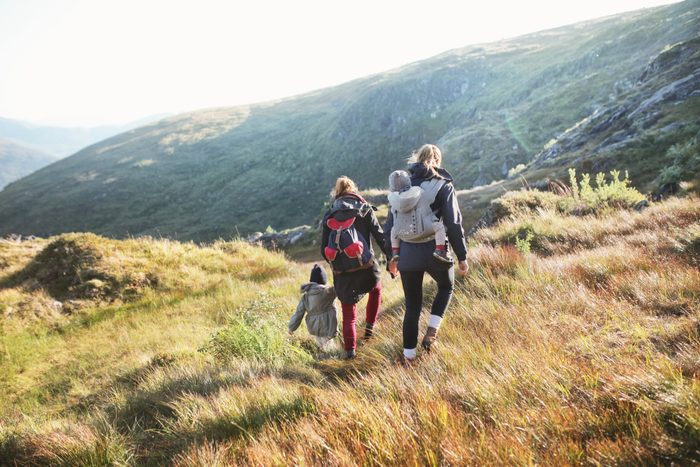
Physical activity #2: Take a hike
Hiking is meant to be done in the wilderness, so it’s a great social distancing workout — in theory. If you’re hiking on a trail with no other people, then you’re golden. But if you’re hiking on a popular trail and are going to be passing other people, it’s best to bring a face covering that you can pull over your nose and mouth when you are in close proximity to other people, says Bryant. (These snack recipes will keep you energized on the trail.)
However, Dr. Chima-Melton warns, don’t rush to pull off your face covering the second you pass by. “Give it probably about 60 feet, to be on the safe side, before you draw your mask down,” she suggests. Why? In a preprinted study, researchers in Belgium and the Netherlands studied how droplets spread when a person is moving and found that droplets can travel in a “slipstream” behind a person.
That slipstream may stay in the air for well over six feet, depending on how quickly you’re moving and the wind. “The risk of transmission is actually quite high, especially if someone is directly behind you,” Dr. Chima-Melson says. So, pull up that mask if you’re hiking near other people, and leave it on until there’s ample distance.
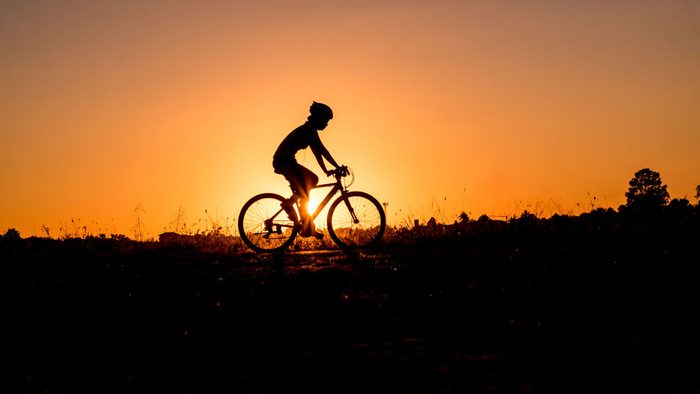
Physical activity #3: Go on a bike ride
Biking solo can keep you active and socially distanced for miles. It’s also a great alternative to public transportation if you live in a city. If you’re biking solo without any other people nearby, feel free to do your thing sans mask. But similarly to running, walking, and hiking, you should wear a mask if you’re biking in a crowded area or with other people.
The slipstream effect, previously discussed, was also observed with bikers in the study. So if you’re biking with friends, Dr. Chima-Melton suggests trying to bike adjacent to the other people and avoid moving in one single-file line so that droplets can’t travel directly behind you as you move. If you can’t, wear a mask. And if you’re biking next to another person so you can chat, wear a mask.
Remember that even though you’re outside, the fact that you’re breathing heavily and moving quickly can increase the risk of spreading respiratory droplets to someone nearby, especially if they’re biking right behind you.
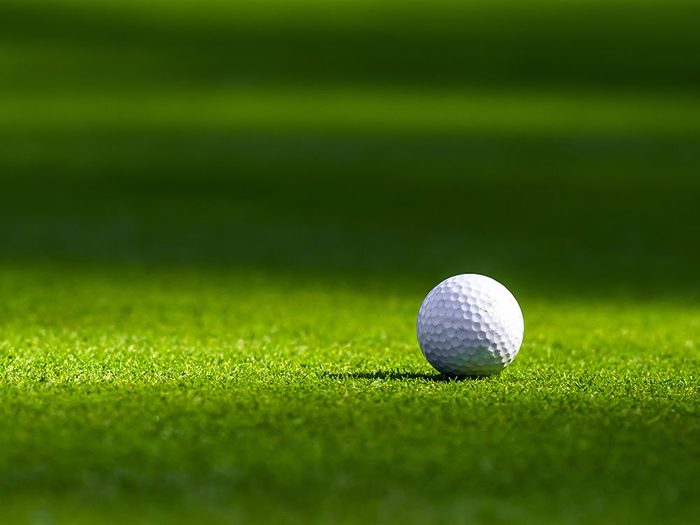
Physical activity #4: Play golf
Golf is one of the best social distancing sports, says Bryant. “Don’t stand in close proximity when you’re gathering on the tee box or around the green. But the sport naturally lends itself to distancing after you tee off and go to various shots.”
On top of being distanced from the other people you’re with, you’re also outside — which is a big pro when it comes to reducing your risk of transmitting or catching Covid-19. While you can’t depend on hot weather or the sun’s ultraviolet light to kill coronavirus, it’s safer than being inside with people.
If you’re on a golf cart with another person, make sure to wear your mask. It’s also best to use your own equipment if you can, says Bryant. “That will reduce the risk a little more.” If you have to rent anything, make sure the facility is cleaning and disinfecting everything in between uses, and be sure to avoid touching your face as you play. When you’re done, wash your hands thoroughly with soap and water.
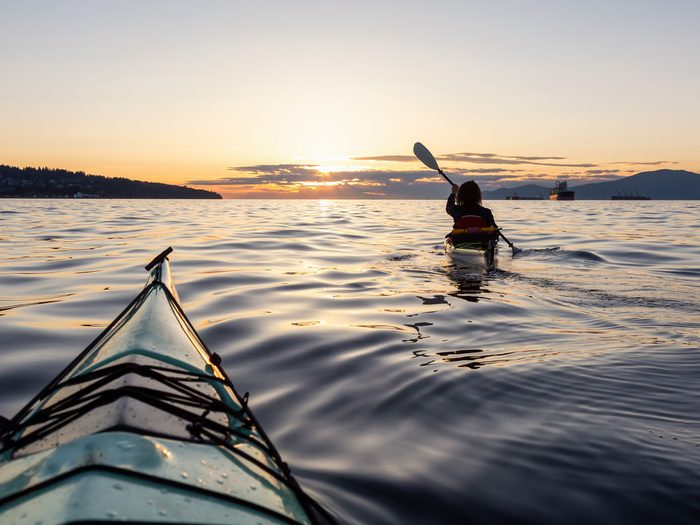
Physical activity #5: Go kayaking
“Kayaking can be a very effective activity that can be done with the greatest amount of distancing,” Bryant says. Kayaking is an amazing upper-body workout, and there’s arguably no safer place to be than out in the middle of a lake in your own kayak, hundreds of feet away from the nearest person.
You’ll want to keep a few things in mind, though. First, always make sure you’re following an abundance of caution and kayaking safely. Only do it if you are comfortable swimming in the body of water on which you’re paddling. Also, try and familiarize yourself with the kayak and make sure you’re following all the instructions and limitations (like weight limits).
First responders have a lot on their plates, so you want to avoid straining these resources (and exposing these people) if you don’t need to.
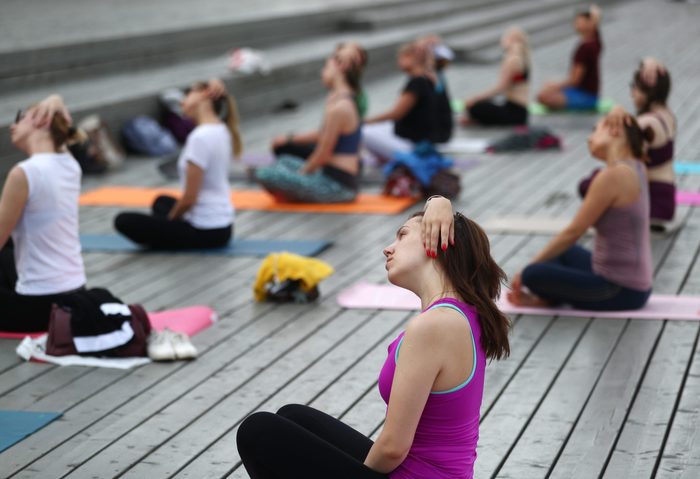
Physical activity #6: Do outdoor group fitness classes
“For the person who may not be recreational-sport inclined but more of a fitness enthusiast, outdoor boot camps where the class instructor is diligent and purposeful about making sure there’s adequate spacing between participants is a nice option as well,” Bryant says. You’ll want to make sure the instructor is providing an environment where you can maintain distance, wear a mask, and wash your hands after touching any shared equipment. “The more of those things you do, the more reduced the risk is,” says Bryant.
If it’s really hot out and you want to skip the face mask, Bryant says it will likely be OK if you’re outdoors and there’s good spacing between you and other classmates. But he personally recommends opting for a mask and just making the necessary adjustments to your exercise intensity. (Here are some helpful tips for wearing a face mask in hot weather.)
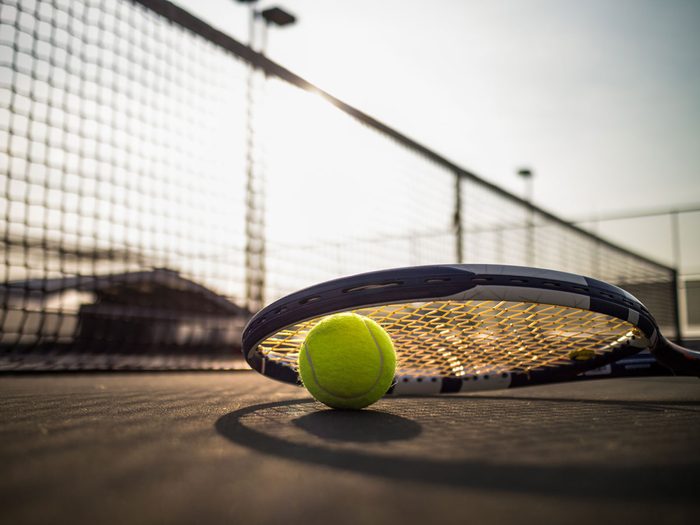
Physical activity #7: Play tennis
“As far as distancing, and not having to be concerned about respiratory droplets, tennis and other racquet sports are nice options,” Bryant says. First, you can play tennis outside. Second, when you’re positioned on the other side of the court from your opponent, you’re typically maintaining more than six feet of distance and staying well outside the respiratory droplet splash zone. The one downside is that you’ll be using a shared piece of equipment: the tennis ball. Bryant says it’s not necessary to BYOB (bring your own ball), but that you’ll need to be aware of not touching your face (eyes, nose, mouth) during the match, and diligently wash your hands immediately after.
Before you play, wash or sanitize your hands so that both people can be sure the other person is only touching the ball with clean hands, says Dr. Chima-Melton. If you’re playing inside, then the safest thing to do would be to wear a mask.
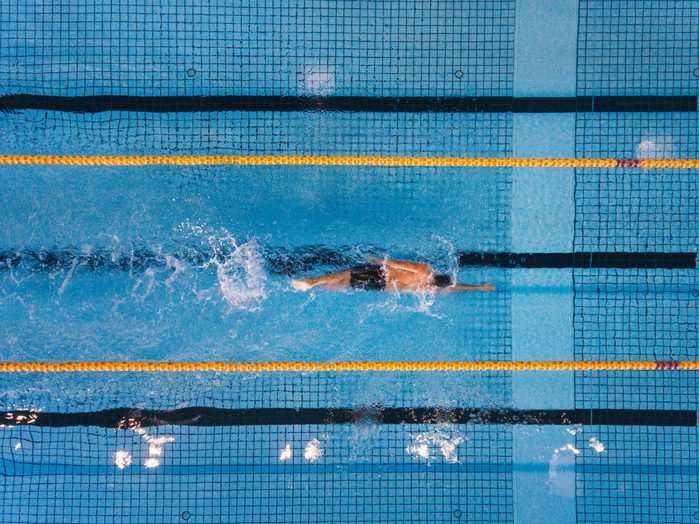
Physical activity #8: Go for a swim
“There have been no reports of Covid-19 transmission in pools,” says Dr. Chima-Melton. While swimming is a great solo sport and considered safe during the pandemic, you’ll need to take some extra precautions depending on where you’re doing it. The CDC suggests a variety of measures that swimming facilities can take to promote social distancing and make these places safer for visitors and employees. These include keeping shared surfaces disinfected, changing layouts of pool decks, rearranging lounge furniture to make distancing easier, and keeping indoor areas well ventilated.
As the swimmer, you can do your part by staying socially distanced, washing your hands frequently, and wearing a mask when you’re in a locker room or other small, crowded areas. Please, just don’t wear a mask while swimming — it’s dangerous. Dr. Chima-Melton says that most facilities should be following these best practices, but if you notice anything that concerns you (like shared equipment that is not being cleaned), don’t hesitate to voice your concerns to management.
Next, learn more about your risk of getting coronavirus while swimming.
